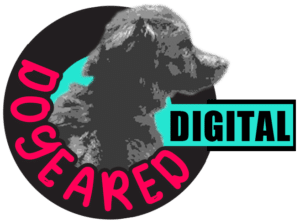Consistently producing content that hits the mark is crucial for attracting the attention you need to meet your goals. But as your brand grows, it can be challenging to increase your content output while maintaining the same level of quality.
This is where mastering the art of content at scale comes into play.
When done effectively, content at scale can help you boost brand awareness, deepen engagement with your target audience, improve your search rankings, and position your brand as an industry thought leader. But how do you achieve this without burning out your team or compromising on quality? Let’s dive in.
So, what is content at scale?
Content at scale is all about developing a process for creating and distributing a large volume of content across channels to cast a wider net and get more eyeballs on your brand. This requires a strategic approach that enables brands to produce a high volume of quality content consistently and efficiently. It’s about developing a repeatable process that allows you to create more content without sacrificing the caliber or unique voice that your audience expects from you.

But why does content at scale matter? Well, with everyone being constantly bombarded with information from countless sources, it is increasingly difficult to capture their attention and stand out from the noise. By producing a steady stream of valuable, relevant content, you can keep your brand top-of-mind, build trust with your audience, and establish yourself as a go-to resource in your industry.
Moreover, content at scale is essential for meeting your goals over time. By consistently publishing high-quality content across channels, you can:
- Boost brand awareness and reach new audiences
- Drive traffic to your website and improve your search engine rankings
- Generate leads and nurture them through the buying journey
- Establish your brand as a thought leader and build industry credibility
However, scaling content creation comes with its own challenges. Ensuring that every piece of content meets your high standards for quality and aligns with your brand voice can be difficult as you increase content volume. It’s also easy for teams to get burnt out or for the content production process to crumble under added pressure.
To overcome these obstacles and start reaping the benefits of content at scale, you need a strategic, systematic approach. This involves documenting your strategy, building a well-oiled production process, distributing on the right channels, and leveraging technology wisely.
Lay the foundation with a solid content strategy
Before you ramp up content production, you need a clear roadmap. This is where your content strategy comes in, with clear documentation to keep your efforts aligned and focused.

A comprehensive content strategy should define your target audience and buyer personas, set clear goals and objectives, identify core content themes and topics, and determine the formats and channels you’ll prioritize. Developing a messaging hierarchy can also help ensure your brand voice remains consistent across all your content, no matter who’s doing the writing. Between your strategy and your messaging hierarchy, you can ensure that you have a clear understanding of what kinds of content and messaging has the greatest potential for impact.
But any content creation, no matter the quality or quantity, is futile if it reaches your customers at the wrong time. Content maps are key to aligning your messaging to the right stage of the customer journey. By creating content that addresses your audience’s needs and pain points at each step, from awareness to consideration to decision-making, you can guide them towards taking the desired action, whether that’s making a purchase, signing up for a demo, or hiring your team.
Build your content engine
With your content strategy documented, it’s time to piece together your content creation machine. This involves assembling the right team, defining efficient processes, and selecting the best tools for the job.
Start by building an in-house team of skilled writers, editors, designers, and experts. Consider supplementing your team with freelancers or agency partners to fill skill gaps and bring fresh perspectives to the table. The key is to clearly define everyone’s roles and responsibilities and foster a culture of seamless collaboration.

Next, establish a systematic approach to content creation. This might include regular brainstorming sessions to generate ideas, in-depth topic research, multiple rounds of editing and refinement, stakeholder review and approval, and post-publishing performance analysis.
Content briefs are a handy tool for maintaining quality as you scale. These condensed but useful guides outline the key elements of each piece of content, including the target audience, main talking points, SEO keywords, and desired calls-to-action. By providing writers with clear guidelines and context, content briefs help ensure every piece of content fits in with your overarching strategy and meets your standards.
In the early stages, your process will inevitably require some trial and error. You may encounter roadblocks, like a bottleneck in the approval stage or a piece of content that misses the mark. Although it’s frustrating, it’s important not to let this get you down. If you continuously look for opportunities to improve your process, you’ll eventually find your rhythm.
Distribute content wisely
Creating great content is only half the battle – to make an impact, it needs to reach the right people in the right places at the right time. So you have to understand where your audience spends their time online and prioritize those channels.

Every brand’s channel mix will look a bit different, but some of the most common include your blog, social media platforms, newsletters, and industry publications. The key is to tailor your content to suit the unique characteristics and user expectations of each channel.
One of the secrets to scaling content creation is repurposing. By transforming a single piece of content into multiple formats while tweaking the message so it’s channel-appropriate, you can squeeze more value out of every asset you create. For example, a long-form blog post could be repurposed into a series of social media posts.
That said, there’s still a time and place for content created specifically for a particular channel. A timely tweet or a thought-provoking LinkedIn post can often perform better than repurposed content. The key is to strike a balance and be willing to experiment to see what resonates with your audience.
Use technology as a tool – not a crutch
The right technology can be a powerful ally when scaling content production, but it’s important to use it judiciously. AI’s writing capabilities, for example, can help speed up the content creation process by assisting with everything from idea generation to editing and optimization. But remember that AI should be used to supplement human creativity, not replace it. AI is most powerful when used as a tool to help brainstorm, research, and optimize human-created content. AI-generated content without human intervention can face SEO penalizations, as well as contribute to the false information pandemic.

Content management systems and collaboration tools can also streamline your workflow and keep your process organized. They allow you to centralize your content creation process, making it easier for team members to work together efficiently and ensure consistency and quality. Some tools that may be helpful as you start to scale are:
Social media management tools
Content management systems
Digital asset management (DAM) softwares
Finally, don’t forget about analytics and performance tracking. By regularly monitoring key metrics like traffic, engagement, and conversions, you can gain valuable insights into what’s working and what’s not, and use that data to continuously refine your content strategy. While content management systems and social media tools will provide performance metrics, Google Analytics is always a cost-free way to monitor content and site performance.
Maximize your impact with content at scale
Creating content at scale is never stagnant. It requires commitment, experimentation, and continuous iteration. It’s not about churning out as much content as possible, but rather about strategically expanding your reach and engagement while staying true to your brand’s values.
As you work to refine your content engine and establish your brand as an industry thought leader, remember that quality should eclipse quantity every time. Your audience can tell what content you’ve put your heart into, and that’s the content that will gain their trust and loyalty.
By approaching content creation with a clear strategy, a commitment to continuous improvement, and a willingness to adapt and innovate, you’ll be well on your way to creating content at scale that always makes a splash. Stay focused on your goals, keep refining your process, and most importantly – never stop learning and growing. What works today may very well not work tomorrow. It takes vigilance and a dynamic and agile mindset to create content at scale over the long term. With dedication and persistence, you’ll be able to create content that truly resonates with your audience and helps you smash your business goals.

